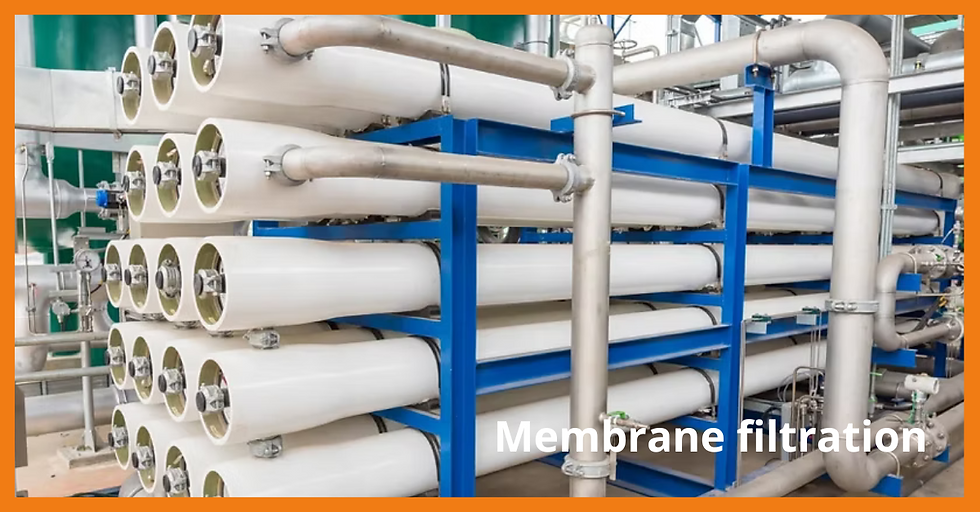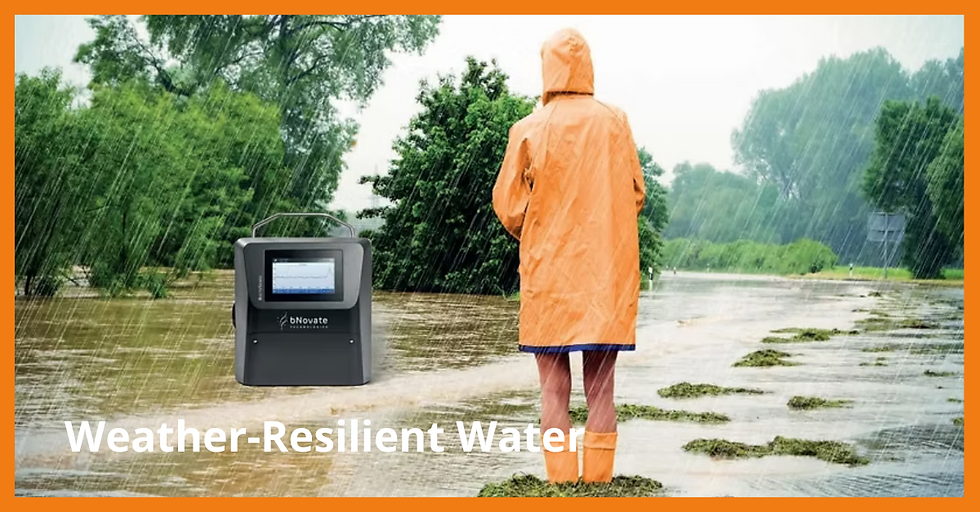Uncovering the hidden microbial world of domestic hot-water boilers
- Martinique Jobin
- Oct 15, 2024
- 3 min read

Homeowners, water professionals and regulators are often unaware of the intricate ecosystems thriving within our household appliances. However, a recent study by various researchers, including Professor emeritus Dr Thomas Egli, a microbiology expert and scientific consultant to bNovate, has shed light on the fascinating microbial communities residing in an unlikely place—our domestic hot-water boilers.
Thermophilic bacteria: the heat-loving residents
The scientists’ research revealed that hot-water boilers harbour distinct, thermophilic, bacterial communities, which are significantly different from those found in the cold-water supply. These heat-loving microorganisms thrive in the boilers' water environment, with total cell counts being 2-3 times higher in hot water than in the supplied cold drinking water from the community’s distribution network.
One of the key findings was the presence of unique thermophilic taxa, such as strains belonging to the families Thermaceae, Hydrogenophilaceae and Nitrosomodaceae, which were not found in the cold-water supplies. These bacteria have adapted to survive and proliferate at temperatures around 50-60°C, which would be inhospitable for most other microorganisms.
Boilers as bioreactors: a microbial playground
The study suggests that domestic hot-water boilers act as semicontinuous flow-through bioreactors, providing favourable conditions for the growth of these thermophilic bacterial communities. The heating process generates assimilable organic carbon from dissolved organic matter, fueling the growth of these microbes.
Interestingly, even boilers supplied with UVC-treated cold water harboured actively growing microbial communities, indicating that these systems operate as autonomous, thermophilic bioreactors independent of the incoming water source.
Implications and the role of BactoSense
Little attention has been given so far to the microbiology of domestic hot-water installations, except for aspects of pathogenic Legionella. Worldwide, regulations consider hot (or warm) water as ‘heated drinking water’ that must comply with (cold) drinking water standards. While the presence of thermophilic bacteria may not necessarily pose a direct health risk (at least, no major pathogens have so far been associated specifically with hot-water usage, except Legionella), their growth could affect water quality, energy efficiency and potential interactions with opportunistic pathogens like Legionella pneumophila.
The researchers employed cutting-edge techniques to gain deeper insights into these microbial ecosystems, including flow cytometry and 16S rRNA gene amplicon sequencing. One of the tools used in this study was the BactoSense flow cytometer, a microbial monitoring solution.
The BactoSense instrument allowed the researchers to analyse and compare the bacterial communities in rapidly flowing cold- and hot-water samples, providing valuable data for further analysis and understanding of these unique microbial environments.
A summary of the hot-water boiler study
This study looked at bacteria living inside home hot-water boilers and provides the following insights:
Bacteria in hot-water boilers differ greatly from those in cold water. Boiler bacteria love heat and can multiply at 50-60°C.
There were 2-3 times more bacterial cells in the hot-water than in the cold-water supply. This shows that the bacteria were growing and multiplying inside the boilers.
The boilers act like bioreactors, providing a warm environment for heat-loving (thermophilic) bacteria to thrive.
Typically, a handful of strains belonging to these families dominated the hot-water communities studied here.
This study used advanced flow cytometry, a Bactosense instrument, and gene sequencing techniques to analyse bacterial communities. While no thermophilic bacteria are known to harm human health directly (except Legionella) so far, their growth could impact water quality, energy efficiency strategies and interactions with other microbes.
Worldwide, regulations consider hot (or warm) water as ‘heated drinking water’ that must comply with (cold) drinking water standards. Therefore, more research is needed to understand them, but it has been shown that hot-water boilers may harbour a home for bacteria we did not even consider.
Conclusion
This study highlights the importance of considering the microbial ecology of domestic hot-water systems and the need for further research to understand the factors influencing the compositions and growth of these thermophilic communities. Studies like this remind us of microorganisms' incredible diversity and adaptability, even in the most unexpected places, as we continue exploring the microscopic world.
Read the full scientific research on domestic hot-water boilers for more details.










Comments